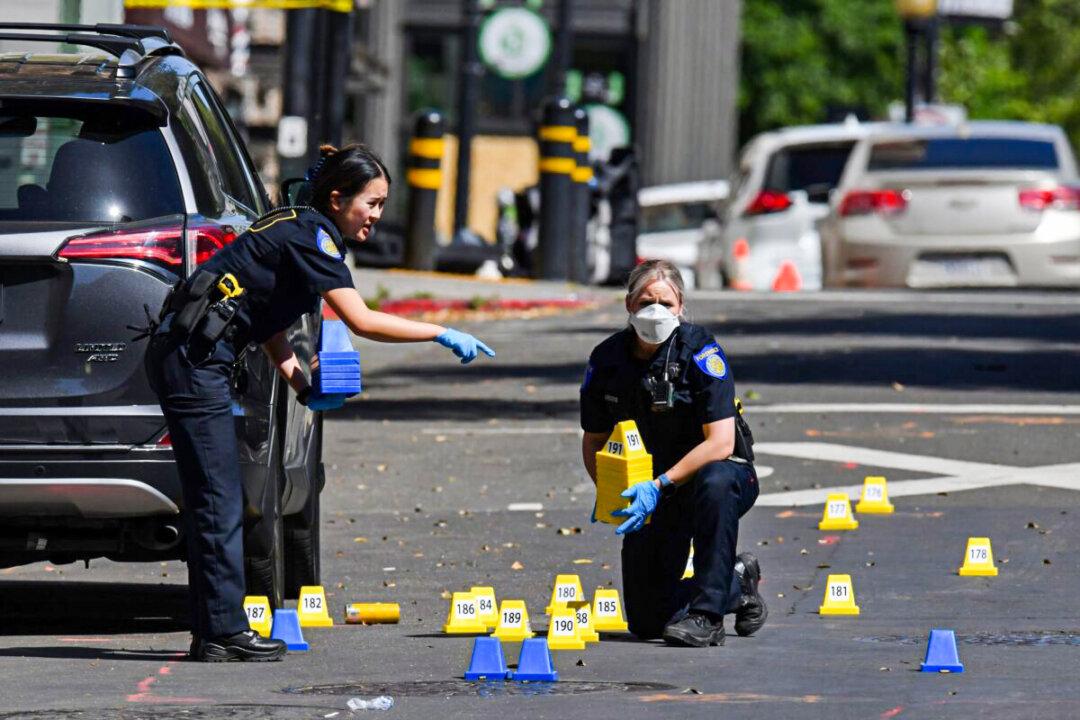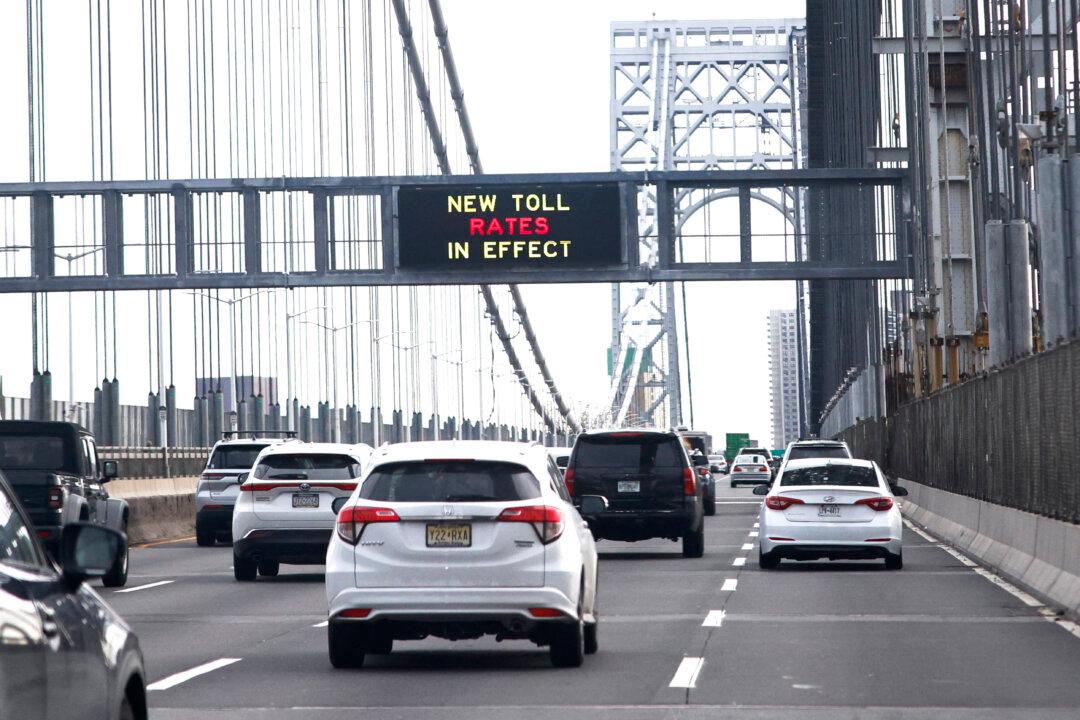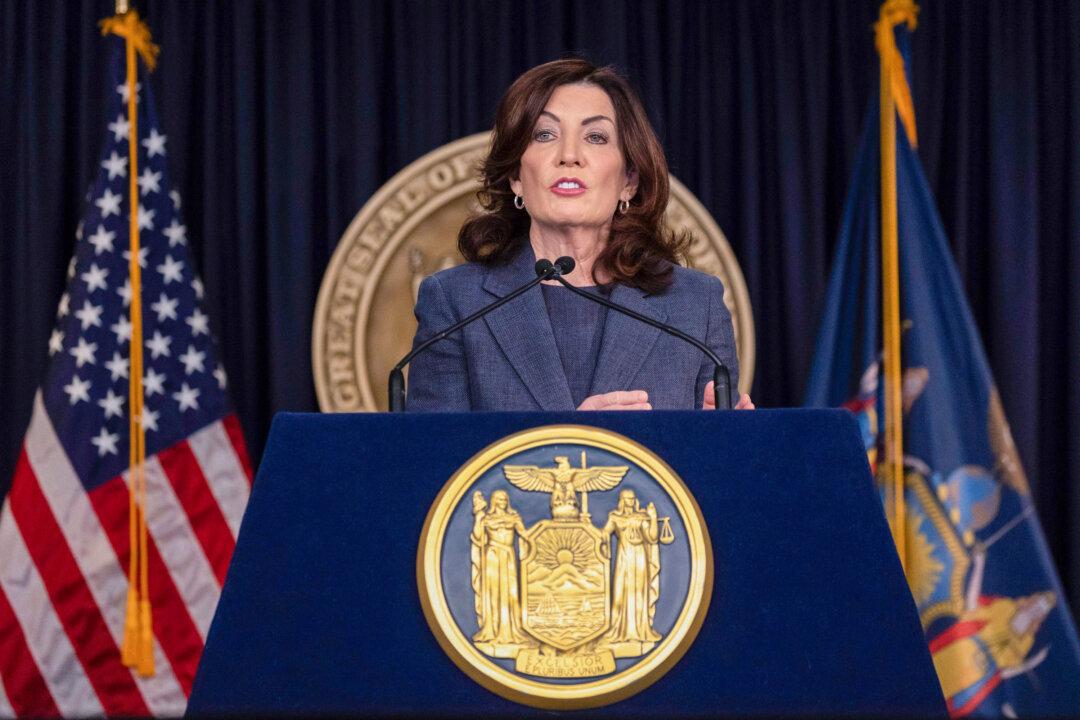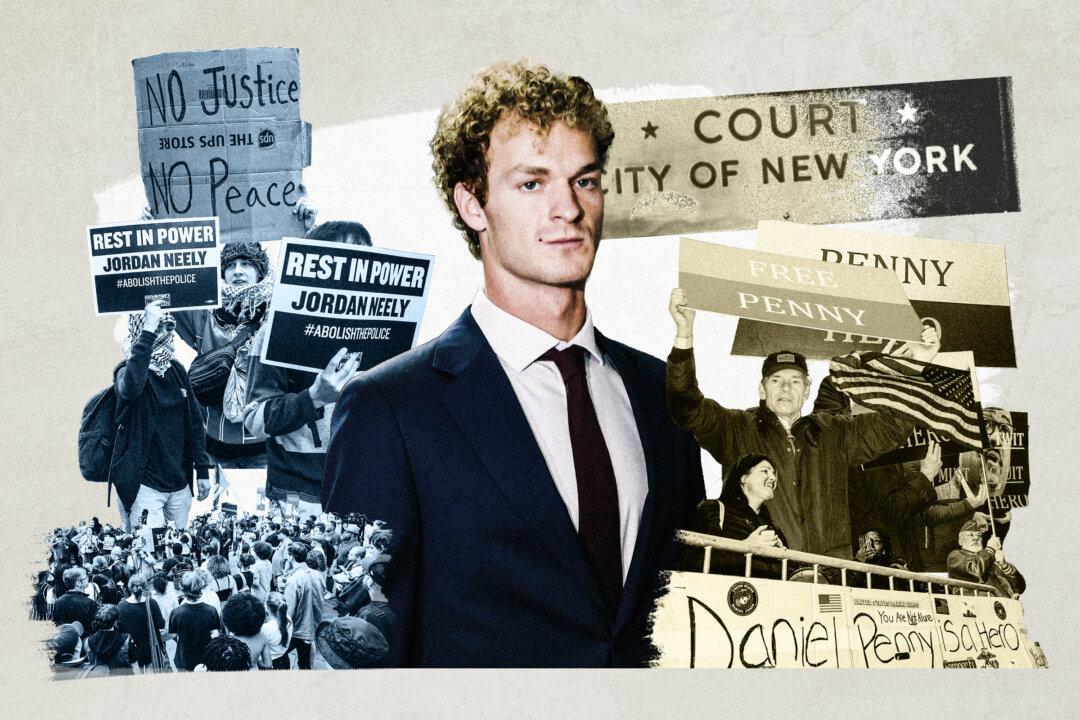The dramatic surge in violent crime in many U.S. cities is a consequence of wary and tentative policing in the wake of the summer of 2020 unrest following the death of George Floyd and the efforts of progressive district attorneys to deemphasize enforcement and aggressive prosecution, according to criminologists and experts.
The rise in crime has been particularly pronounced in the nation’s largest cities. New York Police Department (NYPD) statistics for January indicate that overall crime was up by 38.5 percent compared to January 2021, with some of the highest increases in categories such as shootings (31.6 percent), robberies (33.1 percent), and grand larceny (58.1 percent).





